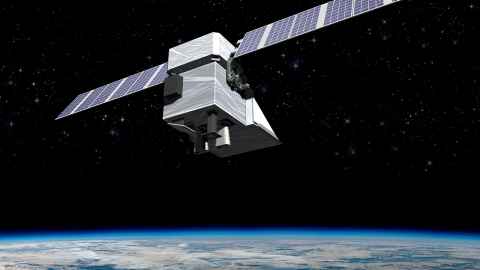Meet experts behind NZ’s first national space mission
18 May 2022
Experts on NZ’s first government-funded space mission talk science and technology in a free Techweek event at the Faculty of Engineering on Friday (20 May).

The mission, which aims to solve a climate change challenge by reducing methane gas leaks around the world, is scheduled to launch in early 2023 with a state-of-the-art satellite operated by the university in partnership with Rocket Lab.
Speakers from the university and Rocket Lab will discuss the science and technology involved in the project along with speakers from other key partners including NIWA, the New Zealand Space Agency – which sits within the Ministry of Business, Innovation and Employment (MBIE) – and MethaneSAT LLC.
It will be held in the Mission Operations Control Centre, Faculty of Engineering, and registration is free.
Chris Jackson, mission operations director at Te Pūnaha Ātea – Space Institute which is based in the faculty and speaker at the event for the university, says:
“MethaneSAT will be a real catalyst for New Zealand’s growing space sector and we are hoping this event will help spark public interest in what is the country’s first official national space mission."
Accurate tracking of methane emissions is considered a key element to reducing climate change as methane is a highly potent greenhouse gas, 80 times more powerful than carbon dioxide and a major contributor to global warming.
The satellite being built for the mission has cutting edge cameras capable of detecting methane gas which means emissions, which come mainly from gas and oil industry pipelines and industrial agriculture, can be identified, monitored and reported.
The satellite is being built by US-based companies Ball Aerospace and Blue Canyon Technologies. It will launch in the US and orbit 585km above the earth.
Initially, the MethaneSAT satellite will be operated by Rocket Lab from the company’s mission control centre in Mt Wellington. Once operation is established, it will pass to the university and run from the Mission Operations Control Centre (MOCC) in the Space Institute – Te Pūnaha Ātea.
Data from the mission will be delivered to US-based Environmental Defense Fund (EDF), a large not-for-profit environmental advocacy group based in New York, who have funded the mission. EDF has partnered with scientists at Harvard University, where the methane detecting techniques were developed.
The research team led by Professor Steve Wofsy at Harvard will focus on emissions from the oil and gas sector. A New Zealand science team, led by Dr Sara Mikaloff-Fletcher at NIWA, will work on agricultural methane emissions.
MBIE has contributed $27 million to the mission which is run by MethaneSAT LLC, a non-profit subsidiary of the EDF.
Says Jackson: “There is a growing new space movement around the world with young players working alongside global entities like NASA and European Space Agency, and New Zealand wants to be part of that movement.
“This partnership will bring a huge benefit to the education and training we can offer young engineering and science students. It will give them real life experience of working in the space industry which they can take, and then go onto help build the industry in New Zealand.”
The event, MethaneSAT: NZ’s role in solving a climate challenge from space, can be attended in person and is also being livestreamed. Register for both options here.
Media queries
Alison Sims | Media adviser
M: 021 249 0089
E: alison.sims@auckland.ac.nz